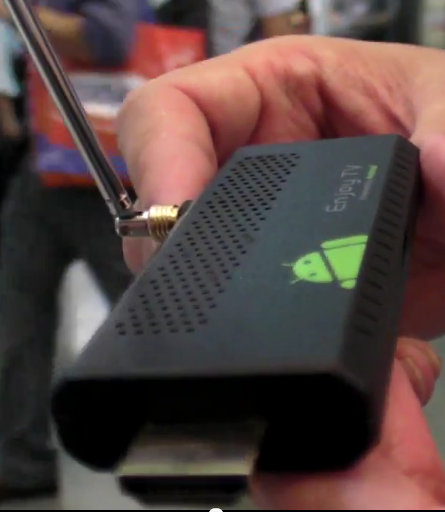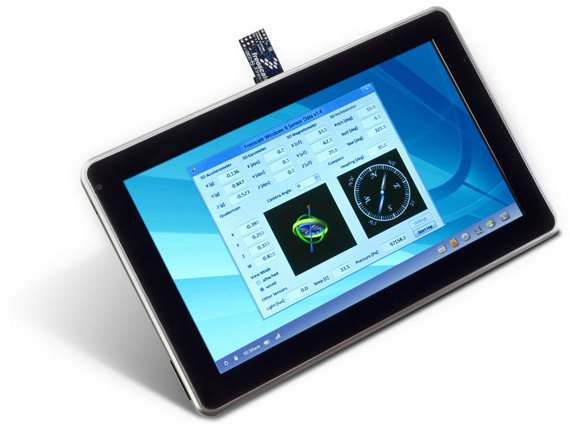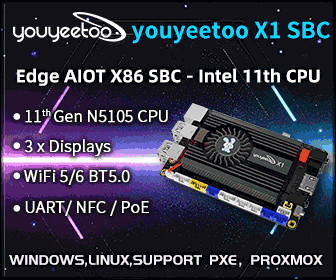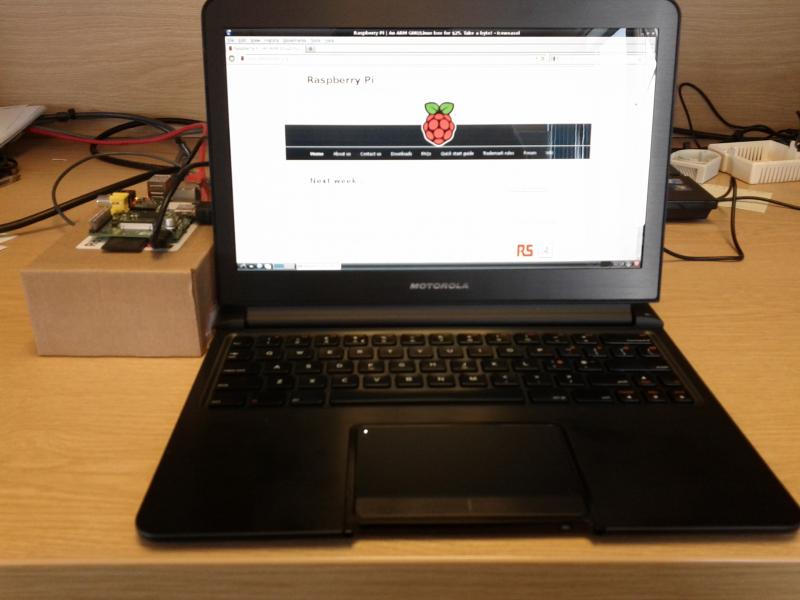Geniatech showcased the Enjoy TV Stick ATV100 at Computex 2012. This is yet another HDMI stick running Android 4.0, but instead of being powered by AllWinner A10 like most others, it is based on AMLogic AML8726-M3 (Single core Cortex A9) clocked at 800 MHz. The device also comes with 1 GB DDR3 memory, 2GB NAND Flash and features 2 USB ports (Standard USB 2.0 Host + mini USB OTG), a microSD slot and a port for an IR extension cable. Contrary to all HDMI dongles I have seen, there is also an external Wi-Fi antenna, as you can see on the picture above. An InfraRed remote with 6 keys is also included. The first part of the video below is about Geniatech ATV1200, an Android 4.0 set-top box based on AMLogic AML8726-MX (Dual Core Cortex A9), and the part about ATV100 starts at 2:23. I think there is a misunderstanding […]
How To Create and Seed a Torrent in Ubuntu Using Transmission Command Line
You may have a server with limited (free) monthly bandwidth, but yet need to share some large files or files that need to be accessed by a large number of people. Instead of sharing your files via your HTTP server, you can share them via BitTorrent instead in order to hopefully save bandwidth. Here are the steps I followed on Ubuntu 11.10, but they should work with any version of Ubuntu, Debian and Mint. Install transmission client and daemon
|
1 |
sudo apt-get install transmission-cli transmission-daemon |
Create a directory to share your files and .torrent files
|
1 |
mkdir ~/p2p |
Copy your file in that directory and create the torrent file with transmission-cli
|
1 |
transmission-create ubuntu.bin.7z -t udp://tracker.openbittorrent.com:80 |
Start transmission-daemon
|
1 |
transmission-daemon -c ~/p2p |
That’s all your need to do. If you want to monitor transmission remotly via a web interface, you can instead run transmission-daemon as follows: transmission-daemon -c ~/p2p -a public_ip Where public_ip is the public ip of your computer. Alternatively, you could also […]
Texas Instruments Wi-Fi Miracast Wireless Display on OMAP 4470
A few days ago, Texas Instruments announced a Wi-Fi CERTIFIED Miracast Video Streaming Solution based on OMAP4470 and WiLink 7.0, and they said in their press release that they would demo the platform at Computex 2012. Charbax is currently there, and shot a video showcasing different use cases possible with Miracast such as multi-tasking while streaming and mirroring. This technology looks very promising, especially since existing devices based on OMAP4470 will be able to support it with just a software update. You’ll also need to have a Miracast compliant TV, but eventually you should be able to buy a Miracast HDMI dongle for your TV (instead of buying a new TV), which is basically the board used in the demo except they use cables. This technology could be a threat to the MHL standard. The only advantage of the latter is that you don’t need power supply as it will […]
Texas Instruments Sells the MetaWatch, A Wearable Bluetooth 2.1 Watch Devkit For $139
I think there is a TI deal about once a month, and today Texas Instruments sells (via Digi-Key) a Pebble Watch clone device similar to Pebble Watch called MetaWatch which is based on TI MSP430 MCU and CC2560 Bluetooth host controller and was released last year. There are two models: Metawatch Analog ($139) Metawatch Digital ($149) Both models regular price is $203. The discounted price also includes free shipping, but you need to follow the instructions carefully. Although the Metawatch is supposed to currently support both Android and iOS, the model sold is the original one that only supports Android. Here are the specs of the digital Model: Compatibility: Most devices with Android OS 2.3 and up. Potentially any programmable device supporting Bluetooth 2.1 and up device with Serial Port Profile (SPP) connectivity. Case / strap: 3 ATM water resistant stainless steel, black or white replaceable genuine leather strap Display: Mirror polymer network […]
IAR Systems Releases Embedded Workbench for ARM Version 6.40
Earlier today, IAR Systems has announced the release of version 6.40 of Embedded Workbench for ARM. This new version introduces several new features, enhancements and optimizations. The enhancements include a new source browser and text editor, with functionality such as auto-completion, code folding, block selection, block indentation, bracket matching, and zooming. Word/paragraph navigation have also been improved. IAR Systems also enhanced the compiler with improvements to the stack usage analysis functionality that provides calculations of the maximum stack depth for each call graph root and new features such as support for C++ source code and recursion. A new linker directive check can be used to calculate the stack usage at link time to verify that the used stack space does not exceed the allocated memory. The inline assembler has also been improved and expanded with a large number of new operand constraints and modifiers. In a previous post “Green Hills […]
Freescale 12-axis Xtrinsic Sensor Platform Technology for Windows 8 / RT
Freescale announced the Xtrinsic Sensor Platform, a 12-axis sensor development reference platform for Windows 8. This 12-axis sensor platform includes several sensors by Freescale and other companies: Xtrinsic MMA8451Q 3-axis accelerometer Xtrinsic MAG3110 3-axis magnetometer Xtrinsic MPL3115A2 precision altimeter, pressure, and temperature sensor An analog ambient light sensor A selection of 3D gyroscopes are also supported This platform is powered by Freescale ColdFire+ MCF51JU128VHS MCU which combines, configures and processes sensor data with Freescale sensor fusion software to match the requirements of Windows 8/RT. Xtrinic sensor platform communicates with the host device via USB. It does not requires extra drivers as it uses standard HID drivers. You can watch the video below which is an introduction (including some technical details) and demo of the system. Strangely, I could not find a similar Freescale 12-axis reference design for Android or Linux, and I’m not sure why they would limit this hardware […]
Make Your Own Raspberry Pi Laptop With a Motorola Lapdock
There is a very interested thread over the Raspberry Pi forums started by user veryevil where he explains how he built a Raspberry Pi laptop based on Motorola Lapdock (normally used with Motorola Atrix smartphone). This is actually a real hack, because the Raspberry Pi still have to sit outside and you need to make custom cables. But the result still looks great, and veryevil claims the system runs Linux smoothly with a resolution of 1366×768 and the battery can last for hours. Some other users have joined the party, and improved on the design with shorter cables. You can check that forum post for detailed pictures of each cables. Motorola Lapdock used to be an expensive piece of equipment, but Raspberry Pi users indicated it’s currently discounted to 69.98 GBP on Amazon UK and I found it for 81 USD on Amazon US (AT&T Version) which makes it somewhat […]
Mitac Unveils ARM Based GFX Server at Computex 2012
MiTAC International announced their first ARM server (MiTAC GFX) based on Marvell ARMADA XP SoC and running Ubuntu 12.04 LTS at Computex 2012, in Taipei. This solution appears to be similar to Dell “Copper” ARM server announced last week, which also uses Marvel ARMADA XP and runs Ubuntu 12.04, except its intended to be a real product rather than just a prototype. The MiTAC GFX with ASX-1 module is intended for deployment as a general purpose server where real estate, efficiency and throughput at a realistic price are key factors and typical applications include web hosting, web browsing, email, chat, social media and networking, etc. Later, MiTAC will introduce an ASX-HP (High Performance) module for compute intensive workloads that can be add to GFX system, and ASX modules featuring 64-bit SoC are under development. MiTAC showcased a GFX System with 64 nodes (that’s 256 Cortex A9 cores) at Computex 2012, […]











